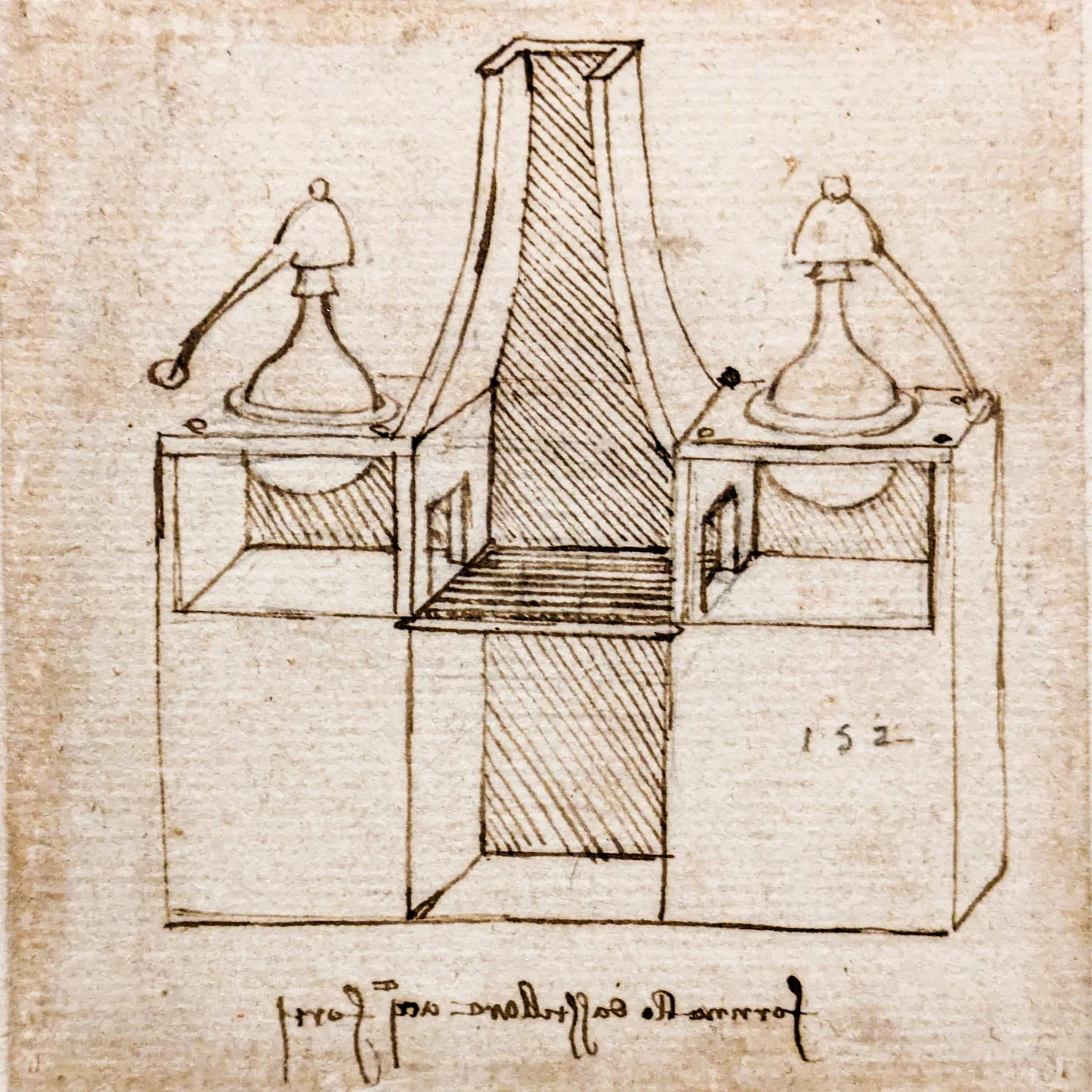Leonardo de Vinci: Beautician.
Study of a tower furnace for the distillation of aqua fortis
My enduring curiosity about Leonardo da Vinci has taken me from the streets of Florence in Italy, where his genius was shaped, to Amboise in France, where his story drew to a close.
This man's curiosity knew no bounds.
Disciplines which were not then known by the names we use today, mathematics, chemistry, botany, biology, anatomy were all as one to him.
Leonardo didn’t compartmentalise his experiments. For example, before him, only apothecaries created fragrances which were not meant to be put directly on to the skin. Aristocratic women wore perfumed pomanders (a sort of air freshener) around the waist and put scent on clothes, gloves and shoes. It was also used on coins to take away the metallic smell. Sachets of violet powder were put in the linen cupboard.
Pomander. Exhibition: Leonardo da Vinci and Perfumes in the Renaissance, Château Clos Lucé 2024
Leonardo soaked flower petals in fat to extract scents. He designed his own equipment to make perfumes.
His experiments in distillation are among the earliest recorded in Europe.
He left us one of his perfume recipes.
Add peeled almonds to the flowers of bitter orange, jasmine, privet or other fragrant flowers and change the water each time you have to change the flowers, so that the almonds do not take on a musty smell. Codex Atlanticus, fol. 195v
The end product was, perhaps still is, a delicately perfumed oil.
Leonardo was fascinated with the sense of smell and how it can evoke powerful memories. He queried the possibility of developing an olfactory science equivalent to that of sight and hearing.
The academic researcher, Maria Pirulli from Milan, has a degree from the Accademia di Belle Arti di Brera and another in Art History from the University of Bologna.
Studying Leonardo's Notebooks, she came acros his experiments with cosmetics.
She published her findings for the Exhibition Leonardo: Genius and Beauty.
Leonardo also left a recipe for a depilatory paste which Signora Pirulli identifies as a precursor to the wax strip.
Hairlessness was a sign of high social status, Only the wealthy could afford the time for depilation.
Women’s eyebrows were shaped or removed as was hair from the lip, chin, armpits and pubic hair.
Artists depicted women without pubic hair.
A pale, luminous complexion was another sign of nobility. Only the lower orders who had to work in the open air had dark skin.
Leonardo invented a moisturiser to protect the skin and cover blemishes.
He distilled snail water to lighten it.
Today, the cosmetic industry still uses snail water.
He created formulas for dying hair light or dark using extracts of saffron, alum, and walnut shells.
Some sources say he used his dyes to cover his own greying hair which is entirely in keeping for a man who placed such importance on his physical appearance.
Impression of a young Leonardo da Vinci
I’d lay odds he used his own moisturisers too. And why not?
What a pity we have only that depressing image of him as an old man with a long beard. Oh to see him as his contemporaries saw him, a Renaissance Dandy in pink satin and velvet tunic, caftan and turban.
Post by Pamela (BA History of Art). Photography by Mark.




